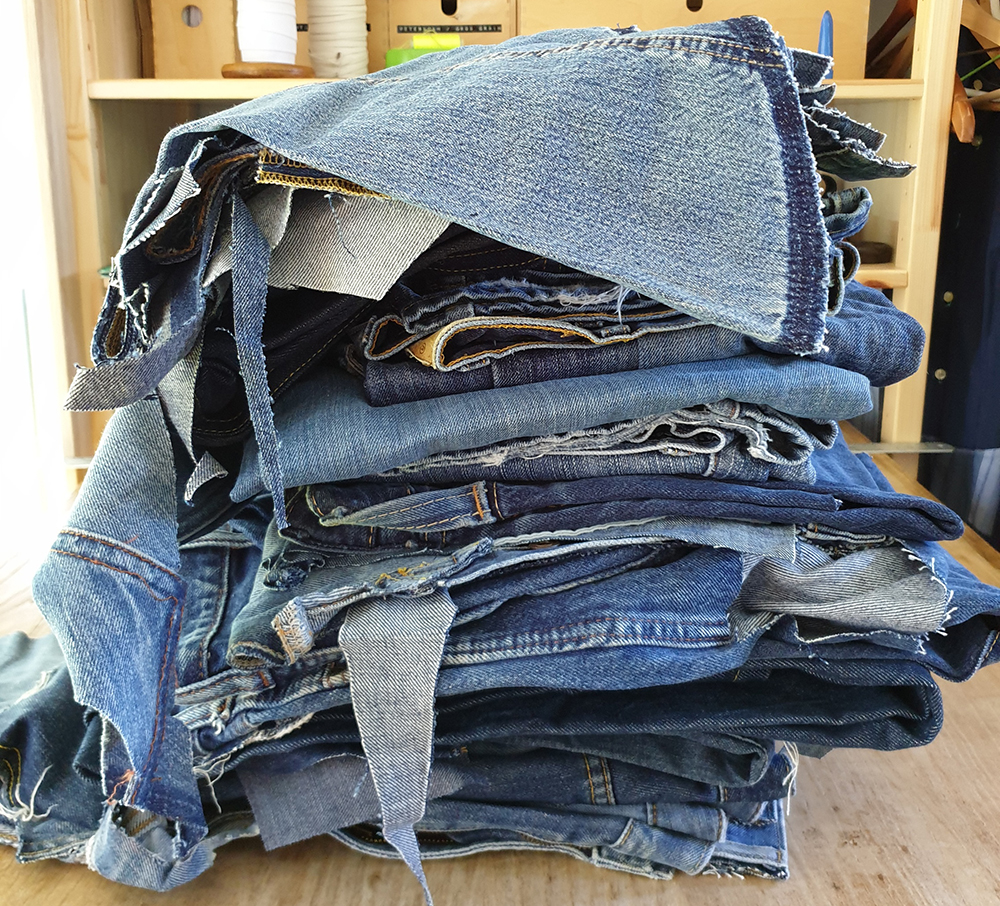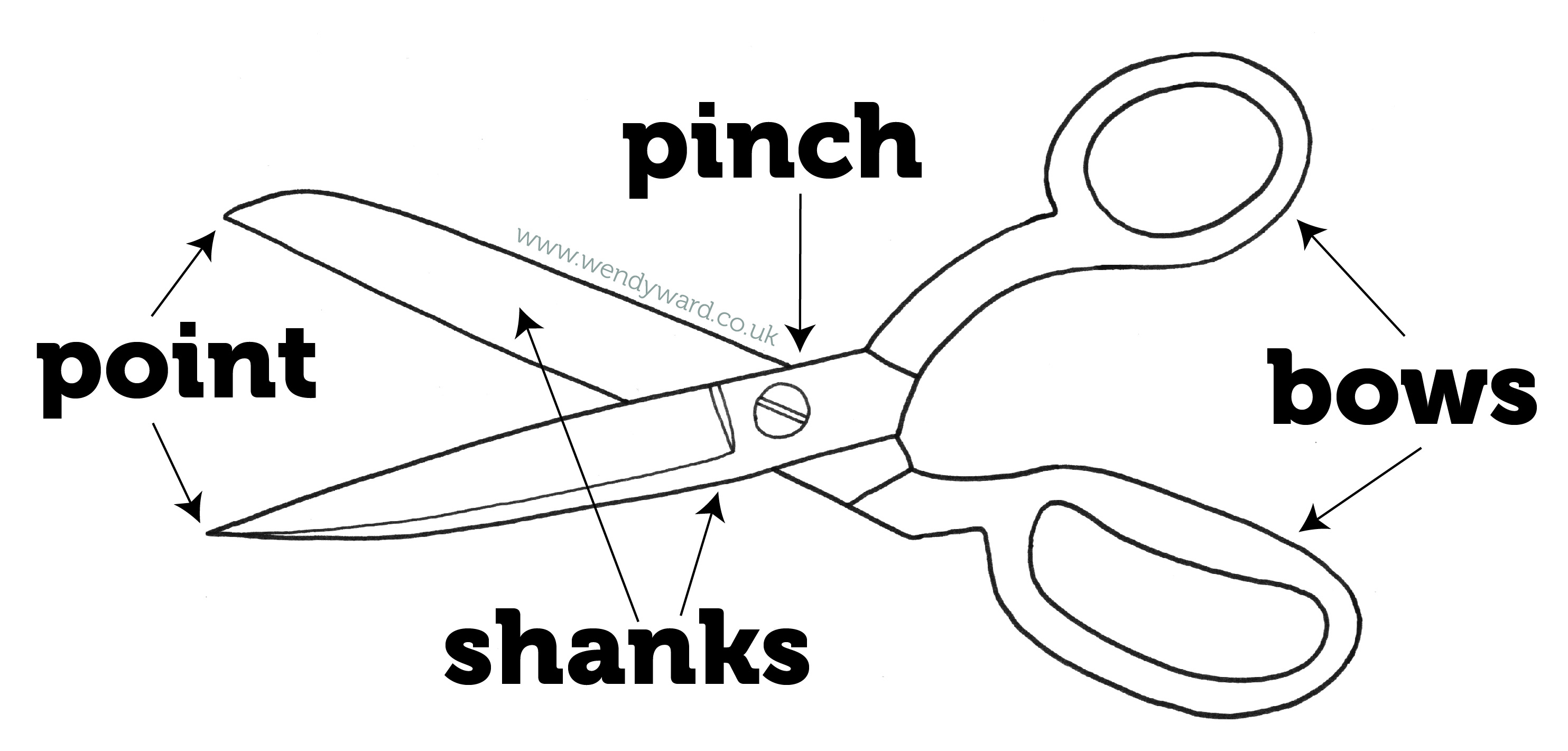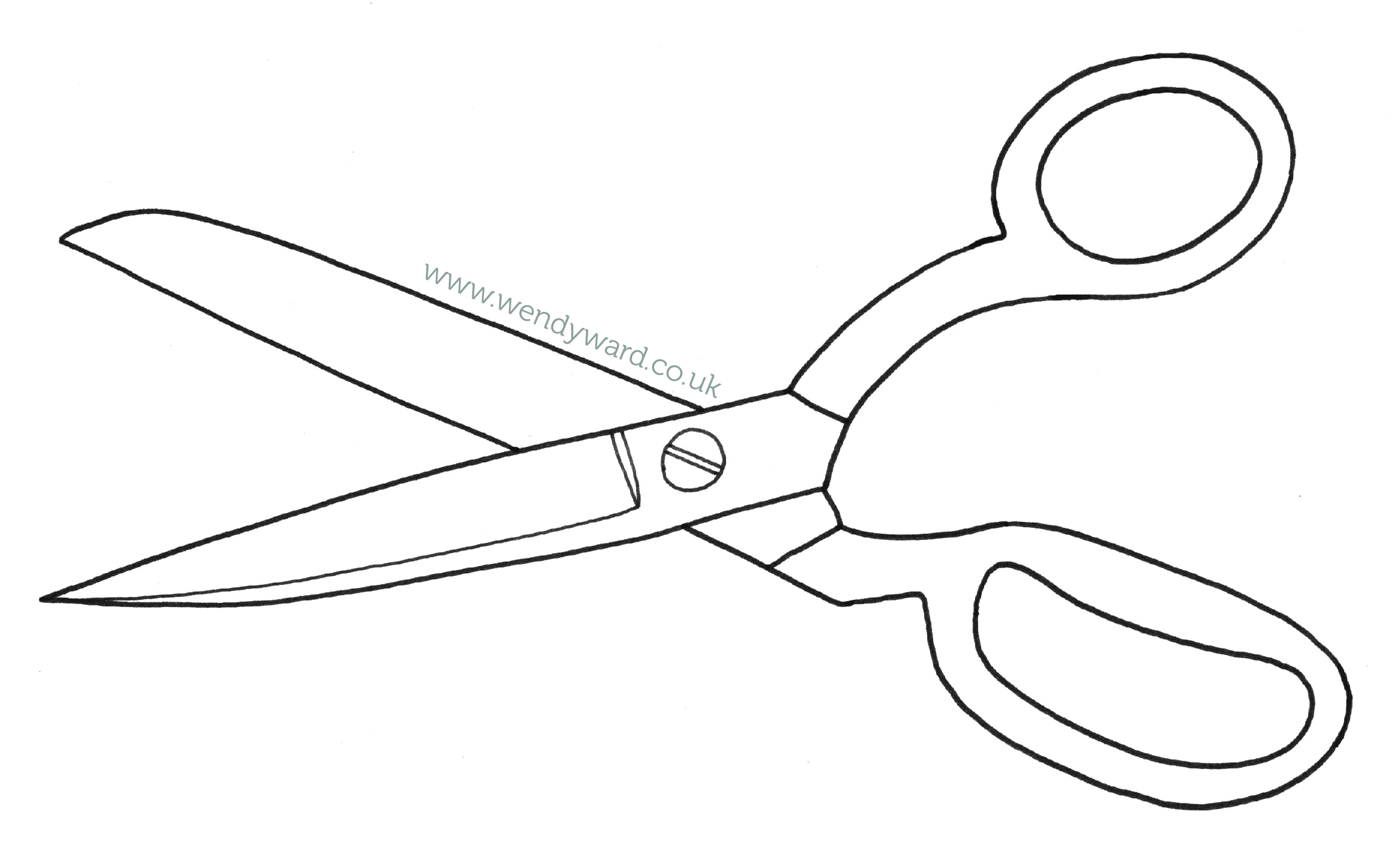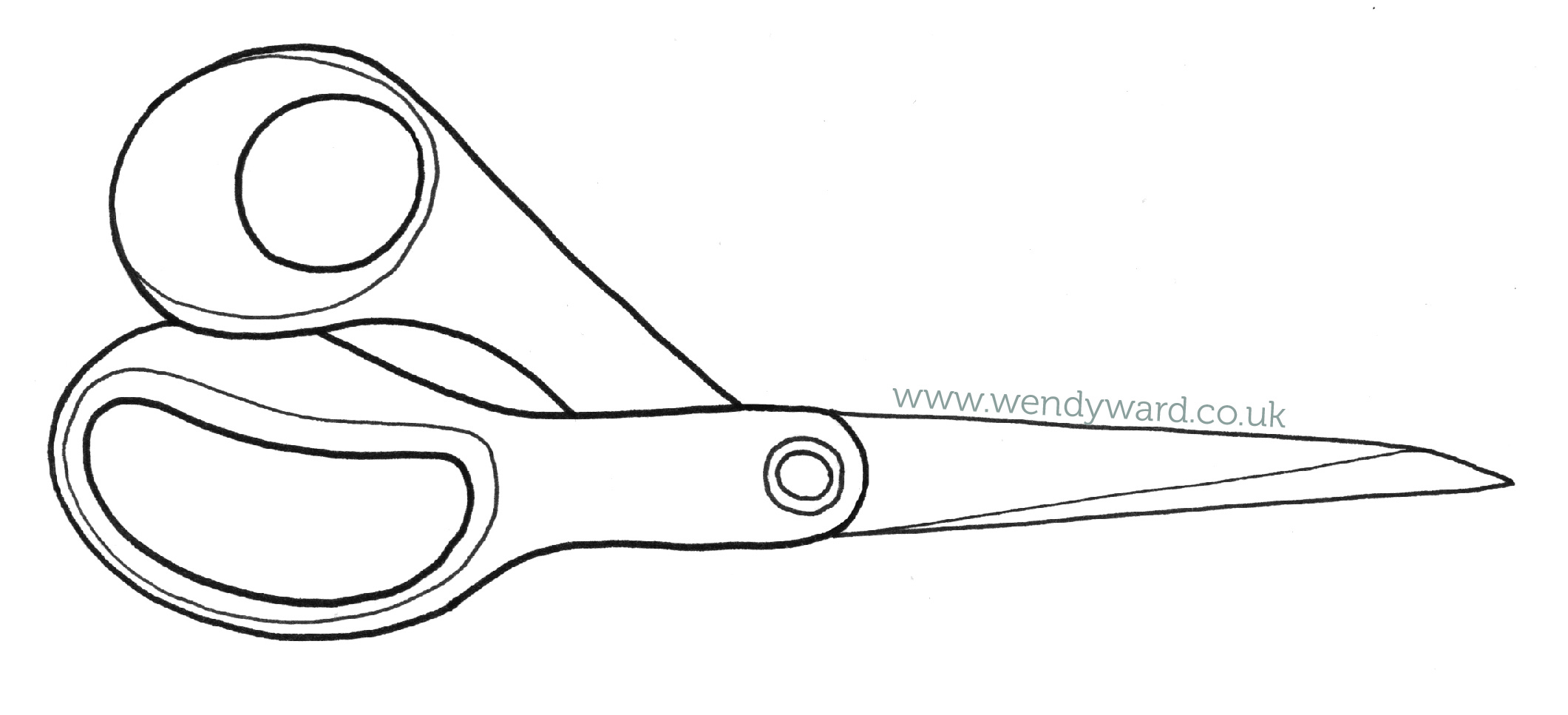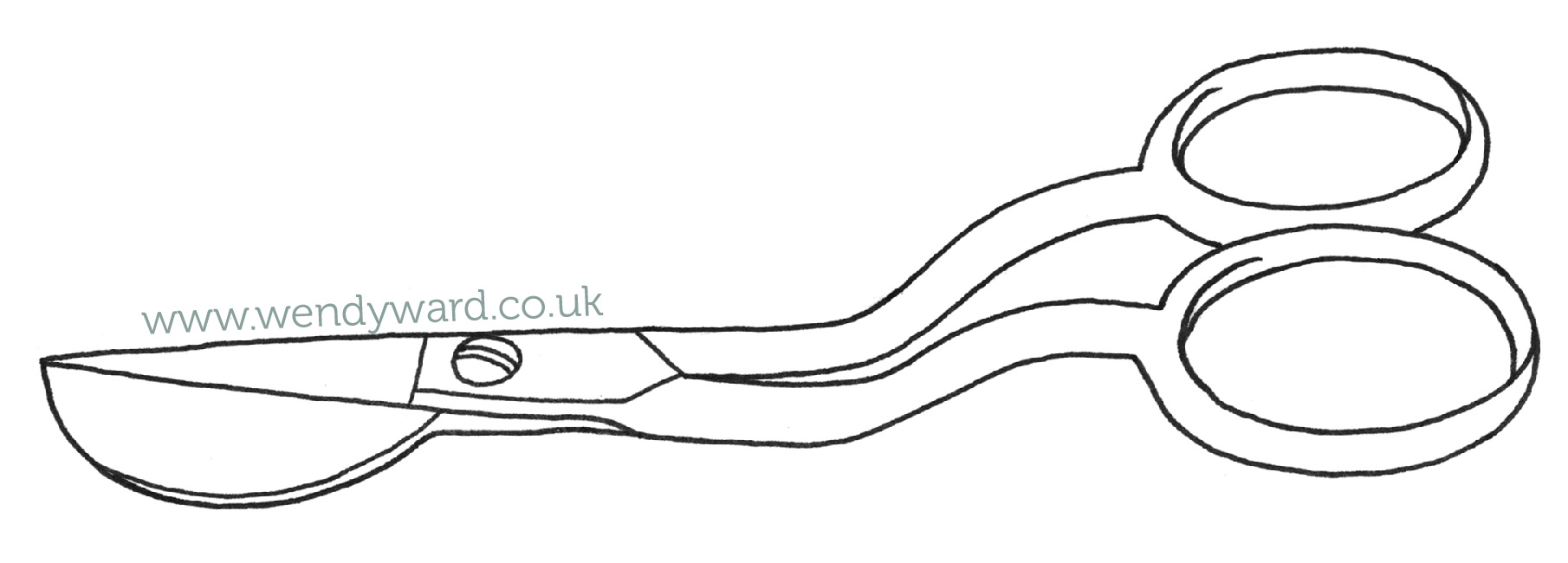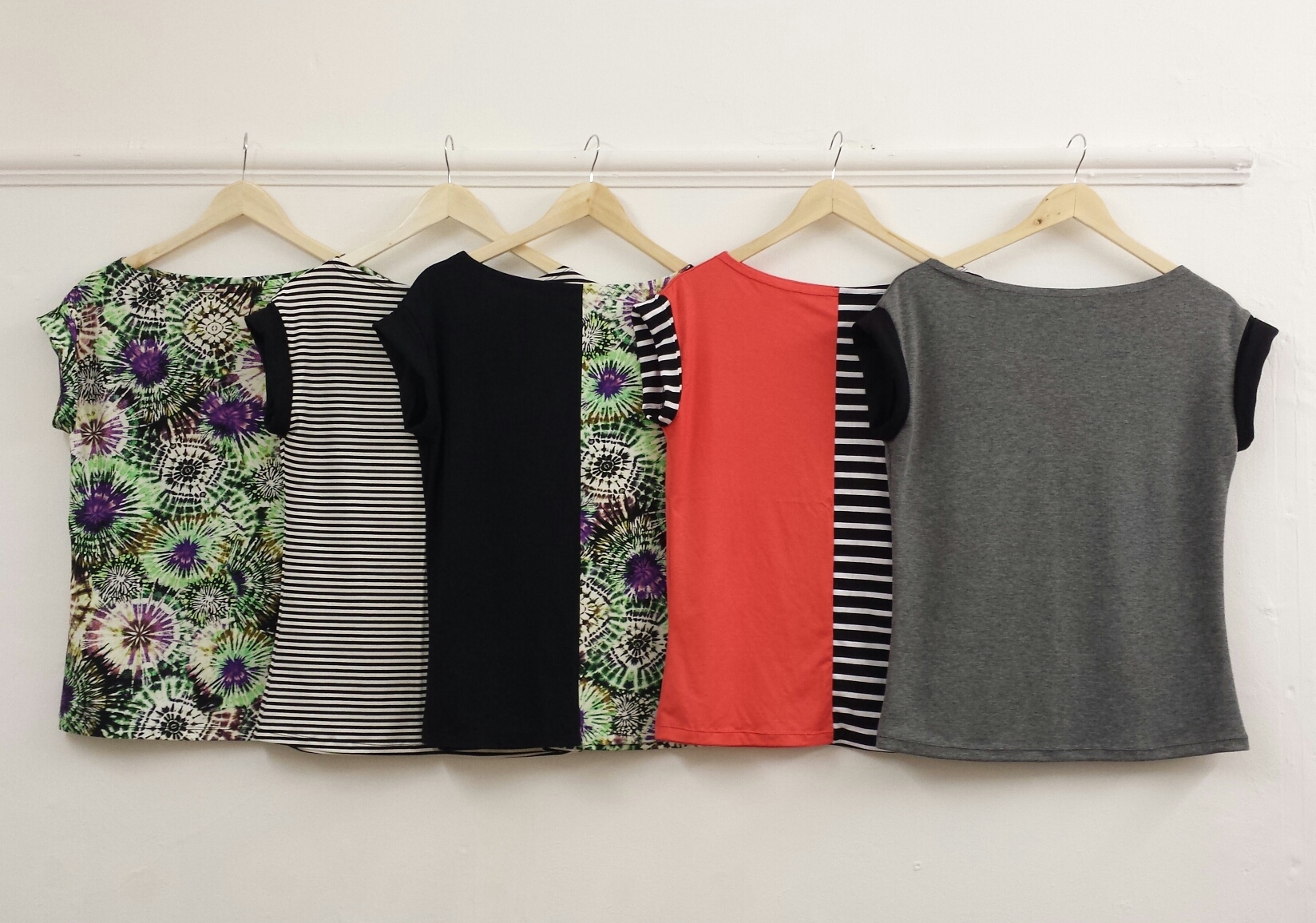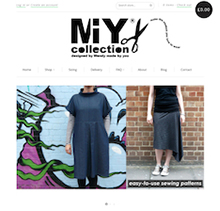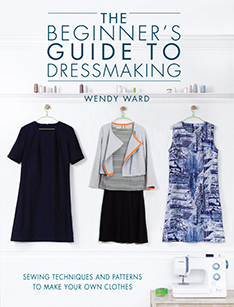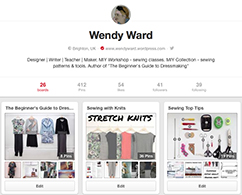Category Archives: Buying Guides
How to Choose Sustainable Fabrics
Posted in Buying Guides, Fabric, how to sew sustainably
Tagged how to choose sustainable fabric, how to sew sustainably, how to sew sustainably book, sustainable fabrics, Sustainable Sewing, sustainable sewing tips, sustainable textiles, Wendy Ward, what is deadstock fabric, what is sustainable fabric, where to buy sustainable fabric
Which Pins Should I Use?
© Wendy Ward. Share this:
Where to Buy Sustainable Fabrics

© Wendy Ward. Share this:
Posted in Buying Guides, Fabric, Sewing Help, Sustainable Sewing
Tagged dressmaking fabric, ethical fabric, fabric shopping, organic fabric, sustainable fabric, uk, uk fabric, uk fabric manufacturer, uk fabric suppliers, uk made fabric, Wendy Ward, what is ethical fabric, what is organic fabric, what is sustainable fabric, where to buy ethical fabric, where to buy fabric, where to buy organic fabric, where to buy sustainable fabric, where to buy uk made fabric
Spoonflower Fabric Printing
Posted in Buying Guides, MIY Collection Patterns, Sewing Patterns by Wendy
Tagged digital fabric printing, fulwood dress, Fulwood Pattern, how to print your own fabric, MIY collection, miy fulwood, on-demand fabric printing, print your own fabric, pull-on dress, shift dress pattern, spoonflower, spoonflower fabric printing
My Top 5 Ethical / Sustainable Fabrics for Home Dressmaking
© Wendy Ward. Share this:
How Many Pairs Of Scissors Do You Need For Dressmaking?
My column for this month’s Love Sewing magazine is all about scissors. Not like me to be going on about scissors is it?!
Here’s a little edited version of the column:
Anatomy of a pair of scissors.
Scissors or shears?
What is the difference between scissors and shears? A good question as fabric cutting scissors often appear to be interchangeably called dressmaking, fabric or tailor’s shears or scissors. Well, apparently when scissor blades are longer than 15cm or 6 inches, they become shears.
Commonly used scissors and shears for dressmaking:
FABRIC SHEARS
Have handles set at an angle to make it easier to ensure the fabric is lifted as little as possible from the cutting surface. The lower handle is larger to accommodate your fingers and handles are often molded to be a more comfortable fit. They come in different sizes, which refers to the length of blades. I like to work with 10” shears, but 8” are also useful and probably easier for beginner dressmakers.
PAPER SCISSORS
Make sure you have a reasonable sized pair of scissors for cutting paper patterns. I prefer to use a similar style of scissors to my fabric ones, ie. angled handles and long blades. Cheap poor quality fabric shears actually make great paper scissors!
THREAD SNIPS
For snipping thread ends when working on your machine, these specially shaped thread snips fit onto just your 2nd or 3rd finger and sit inside your hand to give you more control. They can take a bit of getting used to if you haven’t used them before, but many sewers love them and won’t use anything else.
SMALL SCISSORS
An alternative to snips which I tend to prefer. Choose a pair with large bows (handles) for comfort and make sure they have super sharp points. Keep them for snipping threads when working on your machine, for unpicking and for removing tacking.
BUTTONHOLE SCISSORS
Unusual shaped scissors, with short blades and often with an adjustable screw between the handles. The screw is adjusted so that the scissors can only cut the length of your buttonhole! Much more accurate and tidier than cutting buttonholes with a seam ripper.
APPLIQUÉ SCISSORS
Another pair of unusually shaped scissors, I honestly don’t know what I did before I got my pair they are just so useful. Interchangeably also referred to as duck-billed or napping scissors. In dressmaking I use them most for layering seams. That wide blade on the bottom and the angled up handles allows you to layer seams with no danger of accidentally cutting through the fabric underneath. They are also useful for cutting into reverse appliqué.
Which ones you really need and which ones are “nice to haves”:
As a bare minimum aim to have a pair of each of the following in your sewing tool kit. Save up and buy quality and you will only need to buy them once.
- Fabric shears (at least 8 inch / 20cm)
- Small scissors OR snips
- Paper sicssors (a cheap pair of fabric shears are best, not a 50p pair of tiny craft scissors!)
As you start to do more sewing, you will find these useful so invest in them as and when you can (or stick them on your Christmas list!), but again, quality only and they’ll last you a lifetime of sewing…..
- Appliqué scissors
- Buttonhole scissors
A big thanks to Nick Wright of Ernest Wright & Son (one of the remaining Sheffield scissor makers) who is responsible for a lot of my scissor knowledge!
© Wendy Ward. Share this:
Why Use Ethical Fabrics in Your Dressmaking?

What are ethical fabrics?
Most of us are aware of (and probably also buy) fair trade food and several factory fires and collapses in overseas garment factories over recent years have widened awareness of ethical fashion. There are lots of brands now championing the movement; probably the most well-known being People Tree.
But what about the fabric you use in your dressmaking? One of the reasons I love to make my own clothes is that it puts me in direct control of a major part of the garment making cycle – I made my clothes, so I know that no workers were exploited or environments damaged in making them, right? Well it’s a start, but what about the fabric?
Issues of sustainability and ethical production have been an interest of mine for a long time, in fact it was the subject of my dissertation for my degree 16 years ago! Here are a few facts and figures to get us started:
- Around the world, £40 billion is spent annually on textiles.
- In 2009 the UK fashion industry alone spent £229 million on textiles.
- 2007 to 2011 saw a 75% increase in the market for ethical fashion.
A not insignificant part of our economy!
To find out more about how those of us that make our own clothes can use ethical fabrics I approached Charlie Ross an ex fashion designer trained at the Royal College of Art and went on to set up Offset Warehouse to see if she would agree to an interview. I was over the moon when she agreed to share some of her knowledge with us, so here it is.
Wendy: What makes a fabric ethical?
Charlie: Ethical fabrics are those that are environmentally or socially beneficial, and preferably both. This includes fabrics that are organic, Fairtrade, made from responsibly-sourced raw materials, are recycled, and are manufactured by workers who are paid a fair wage or have a stake in the business.
Wendy: I guess if I’m going to use ethical fabric in my next project I should also consider how all the other parts are made such as threads, zips, binding, elastic, etc, is it also possible to buy ethically produced versions?
Charlie: Absolutely! We stock all sorts of ethical haberdashery: organic threads and zips, upcycled buttons, organic interfacing, bias binding and ribbons. Sourcing these smaller items can be difficult though as the range available is still quite small.
Wendy: What are the main ways that fabric production can be socially or environmentally damaging?
Charlie: Phew, this is just such a massive and complicated subject, but the two main areas we are concerned with are:
The Raw Materials and the Production Process
In many cases, the damage is done before the fabric even becomes a fabric! A prime example is cotton – a fabric we are all led to believe is natural and therefore good – which it certainly is if it’s organically produced. But commercially-grown cotton is not. Its production covers 55% of the world’s cultivated land, yet it’s responsible for the release of US$ 2 billion of chemical pesticides each year! Just under half of these chemicals are considered toxic enough to be classified as hazardous by the World Health Organisation. That’s just shocking, and not enough people are aware of it.
The Aral Sea in Central Asia is another example. In the early 1960s, the Soviet government decided to divert the two rivers which fed the Aral Sea in order to irrigate the desert so they could grow cotton and other crops. The result of this was the entire sea was completely drained, and the lands left behind were turned into carcinogenic wastelands – all because of unsustainable farming.
That’s why I love sourcing and designing fabrics made with more unusual fibres, such as hemp, soy, bamboo and banana. I know what you’re thinking – common perceptions are that these more ethical fibres can be scratchy to the touch, but I source some of the softest, most beautiful, fashionable fabrics in amazing eco fibres! Hemp, for example, has a terrible reputation for being hippy and grungy, but we sell the most stunning hemp silk blends in amazing colours.
The People
Driven by today’s culture of fast consumerism, and in order to compete with increasingly low prices, the textile industry has had to cut corners. Most conventional fabrics are produced by untrained, underpaid (and sometimes not paid at all), overworked staff, in unsafe surroundings. These textiles require highly toxic chemicals to produce them, and these are often handled by workers without the proper safety equipment.
This was one of the main driving forces behind my quest for ethical fabrics – and how I eventually came to start Offset Warehouse. I couldn’t bear the thought that my sewing creations might be harming someone, and I never considered they may have been a product of slave labour. All of our manufacturers and weavers are paid fairly for their fabrics. We also work with very small communities, who weave outside their houses and choose their own hours. They set their prices and their manufacturing timelines, and we never, ever, pressure them to decrease either.

Wendy: Is ethical fabric better quality?
Charlie: Like all textiles, ethical fabrics come in a range of qualities. An organic fibre will behave no differently to a non-organic one – except there are no nasty chemicals in there – so they can be woven in exactly the same way. Therefore, there is absolutely no reason that an ethical fabric should be of a lower or higher quality.


It’s sometimes easy to mistake quality for the finish of the fabric. We sell ethical fabrics that are machine woven, which have a much more consistent surface, and those that are woven by hand, which are more “slubby” and irregular. It’s easy to look at the slubby and irregular fabric, and think it’s a “lower” quality, but we couldn’t be more wrong. I actually prefer hand woven fabrics because of the incredible work that goes into them, their authenticity and character. Both processes produce beautiful products, and each suitable for different things.
Wendy: Do I have to treat ethical fabric any differently to my regular fabric?
Charlie: Absolutely not! In fact, when opting for more sustainable fibres like hemp, linen and soy, you’ll find that your fabric will be a lot easier to care for.
Where can I buy ethical fabrics?

They’re still not that widely available, but there if you look for them. Some online fabric retailers have started to add organic collections or special limited collections sourced direct from artisan groups in places like India, there are also a few specialist online retailers if you search “where to buy ethical fabrics” you should set off on the right track!
Where can I find out more?
http://www.labourbehindthelabel.org
http://www.ethicalfashionforum.com
Some of Charlie’s Top Tips:
- If you can’t find ethically produced haberdashery – recycle and re-use! Before you get rid of old clothes take off the buttons, zips, clips, hooks and save them for future projects.
- Did you know that the most impact from a textile comes right from our very own homes? With the amount of energy and chemicals we use just by using our washing machines, we are pumping huge amounts of pollution into our air and water on a daily basis. Washing on a quick, low-heat wash – or better yet, hand washing – can make a huge difference.
A huge thanks to Charlie for this interview and providing me with facts and figures. I interviewed Charlie for issue 21 of Love Sewing magazine (out now) and this is the full un-edited version of the interview which was a wee bit too long to fit in my pages of the magazine!
What is Offset Warehouse?
Offset Warehouse is a social enterprise which brings together a huge range of hand-picked eco fabrics and haberdashery. All of Offset Warehouse’s products benefit either the people who make them, or the environment, and usually both. This includes products that are organic, Fairtrade and made in cooperatives.
Charlie Ross founded the company five years ago. Graduating from the Royal College of Art with a Masters in Menswear Design, she continued on to work with some of the biggest names in the fashion industry.
Charlie and her team source the most beautiful, hand-crafted and fairly-sourced fabrics, trims, threads, dyes and glues from across the globe, and sell from one to hundreds of metres at affordable but fair prices. And because of her fashion background, the website is always up to date with current and future trends, proving that you can be eco and fashionable. Most importantly, you can feel good knowing exactly where your fabric has come from, and who has made it. And that’s a good thing, for everyone.
© Wendy Ward. Share this:
Posted in Buying Guides, Fabric, Sewing Help, Sustainable Sewing, The Fashion & Craft Industries
Tagged charlie ross, eco fabric, eco fabric for dressmaking, etchical fabric, ethical fabric for dressmaking, ethical fashion forum, fashion industry, fast fashion, interviews, labour behind the label, Love Sewing magazine, offset warehouse, Wendy Ward
Who Drafted Your Sewing Pattern? (or How to Choose a Sewing Pattern)
The world of Indie Sewing Patterns expands by the day, which is good news! Being able to use patterns from independent designers is great, but with so much choice out there, how much do you really know about them?
This is a blog post I’ve been meaning to write for months and as it’s now Sew Indie Month and I’m a part of that amazing project, I thought it was the perfect time!
It’s a subject which has been touched on recently by Abby Glassenberg in this post about an accreditation system, with some interesting discussions in the comments. Although it initially sounds like a good idea which does appeal to to me, I personally don’t think any kind of accreditation system could work; it would be too cumbersome and inevitably result in some sort of subscription or membership fee being due which would push up the price of patterns.
Other options are review sites and curated sites. Of the review sites there’s really only one main one; Pattern Review, it’s thorough, it’s well-used (I think, have you ever used it?), but couldn’t it just do with a bit of an image overhaul? In dressmaking we are sadly lacking a Ravelry equivalent. For all you non-knitters, Ravelry is like Facebook for knitters! Of the knitters I know it seems to be well-used and well-loved.
Of the curated sites, there’s Kollabora and Indiesew. Kollabora has a huge choice, but it doesn’t just stop at dressmaking and includes other crafts. Indiesew focusses just on dressmaking, but it doesn’t stock some key designers. My main reservation about sites like these is that well, didn’t we all think that one of the many great reasons for buying from indie designers is that you know exactly where all of your £$ is going?? Indiesew and Kollabora are both predominantly market places and they take their cut.
Then there are organised events and PDF pattern bundle sales like Sew Indie Month and what was Perfect Pattern Parcel, where patterns are bundled together from reputable indie designers with the proceeds going direct to the designers and also a proportion going to charity.
So really, the best way to check out the credentials of an indie pattern designer, or find one that shares your dressmaking vision, is going to be recommendations from stitchy friends and doing your own research.
Start by asking these questions:
- Do they have relevant training?
- Have they worked in the fashion industry with garment-making experience?
- Do they teach? (Teachers understand how to write clear jargon-free instructions and know the problems that learners will encounter.)
- Have they drafted the pattern themselves? If not, why? Is it because they can’t pattern cut? Someone who doesn’t draft their own patterns might not be able to help with any technical questions you might have about using the pattern. It’s one thing to come up with a nice design, quite another to be able to draft a technically correct pattern for it and really understand how it’s put together so that people using the pattern will be able to do the same.
- Do they have a blog/website where you can find additional technical sewing help and advice?
- Can you see versions that real people have made using the pattern as well as just the designer on their website?
Lots of indie designers do everything themselves and don’t have a massive budget to splash out on fancy graphics, brand designers, web designers, etc so don’t rush to judge a book by its cover: beautiful, professionally designed packaging of a pattern doesn’t necessarily tell you the quality of what’s inside.
Here are some excellent blog posts about what’s involved in developing a new pattern. I did consider writing a post like this myself, but as these two designers have explained it so well, why not read theirs. They’ll also shed light on why indie patterns cost more than the big traditional pattern companies:
http://so-sew-easy.com/sewing-pattern-born/
http://marillawalker.blogspot.co.uk/2015/03/being-independant-designer.html
Happy indie pattern sewing!
© Wendy Ward. Share this:
Posted in Buying Guides, MIY Collection Patterns, Sewing Help, The Fashion & Craft Industries
Tagged digital sewing patterns, easy sewing patterns, easy to use, how to choose a sewing pattern, indie pattern designers, MIY collection, modern sewing patterns, pdf sewing patterns, sew indie month, sewing independent month 2015, sewing indie month, sewing patterns for beginners, SIM2015, well drafted sewing patterns, Wendy Ward, who drafted your sewing pattern
How to Sew T-Shirts
Have you been watching the Celebrity version of the Great British Sewing Bee this week? What do you think? Anything that gets more people interested in sewing is a good thing in my book and even better, making t-shirts! If you know me or my blog you will know how I like to evangelise about sewing with stretch knit fabrics, so I was very happy to hear this was to be included in the show.
If you are feeling inspired to start whipping up your own t-shirts, read on for patterns, tips and guides to help you on your way, all tried and tested by my eager sewing students at MIY Workshop, so you can be sure they all work.
T-shirt Patterns
Here is the T-shirt sewing pattern from my book (“The Beginner’s Guide to Dressmaking”). It’s a really quick and easy make for beginner dressmakers.
If you have done a bit of sewing already, are dabbling with pattern hacking* and fancy something a bit more than a plain version, the book comes complete with a whole chapter packed with ideas for how to modify the basic patterns to create more styles:
*Newbie sewers – pattern hacking = modifying an existing pattern to adapt it into a new version of the style. Something of which I highly approve as it’s creative and empowering to start with a simple version of a pattern and be able to change it a bit to create a new style.
If you don’t want to invest in a whole book and want a t-shirt pattern to just get on with, here’s one from my pattern range, MIY Collection:
Available as a print pattern for £15 or a PDF download for £7, another easy one for beginners and infinitely adaptable for pattern hacking.
Here are just a few of the versions made by my sewing students:
How to Sew T-Shirt Fabric & Where to Buy
Here are some links to some of my most popular posts about sewing with stretch knit t-shirt fabrics:
- How to sew t-shirt fabric on a sewing machine.
- Some background about the different types of stretch knit fabrics and what they’re best used for.
- How to sew hems on t-shirt fabrics using a sewing machine.
- Do you need an overlocker to sew t-shirt fabric?
- Where to buy t-shirt fabrics.
How to Customise a Plain T-shirt
So, once you’ve started you might want to move on from a plain t-shirt to a bit of pattern hacking, customising and embellishment.

Here’s a piece I wrote last year for Sewing World magazine which includes 2 easy ways to customise t-shirts: stencil printing (like on the vest above) and using shirring elastic to change the shape of the t-shirt.
I hope that’s inspired you to go and get busy! If so, why not sign-up for my newsletter to get regular sewing advice and tips: http://eepurl.com/EVEYj
© Wendy Ward. Share this:
Posted in Books by Wendy, Buying Guides, Sewing Help
Tagged Beginner's Guide to Dressmaking, celebrity sewing bee, christmas presents for sewers, do i need an overlocker, easy sewing books, easy sewing patterns, gbsb, gifts for crafters, great british sewing bee, how to make a t-shirt, how to sew jersey fabric, MIY collection, miy workshop, modern sewing patterns, pattern hacking, sewing books for beginners, sewing patterns for beginners, t-shirt patterns, Wendy Ward, what is an overlocker
Which Pressing Tools Do I Really Need?
 You need slightly different pressing tools if you’re dressmaking rather than craft sewing and patchwork. And remember, pressing isn’t simply ironing! It requires more precision, often more heat and a lot more than just an iron and ironing board. Here’s the ideal pressing tool kit:
You need slightly different pressing tools if you’re dressmaking rather than craft sewing and patchwork. And remember, pressing isn’t simply ironing! It requires more precision, often more heat and a lot more than just an iron and ironing board. Here’s the ideal pressing tool kit:
1 – IRONING BOARD – buy the best you can afford, ironing boards last for years! The 3 crucial qualities in an ironing board are: the size of the ironing surface – as big as possible (!), the height it can be adjusted to – more important if you’re taller than average, being hunched over a short ironing board isn’t pleasant and finally how sturdy it is – rickety ironing boards are dangerous. Here’s a great review of the best ironing boards by Good Housekeeping. My recommended brands: Brabantia
2 – IRON – your iron should not be too lightweight which might go against what you would instinctively look for (lightweight = easy, no aching arms!), but to press well, you need some weight, so a lightweight iron actually means more effort is required from you! Irons are now available with a whole range of high tech materials on the sole plate which can glide over your fabric and also be non-stick (handy when ironing on fusible interfacing), make sure the sole plate also has plenty of steam holes and has a nice long tapered point at the end to make it easier to iron in and around those fiddly bits of your sewing. Also look for a variable steam setting, a long cable and a large water tank. The irons that come with a separate steam generator (that look like they’re sitting on a tank) can be useful but obviously take up more space and the cords tend to be a bit shorter. If you live in an area of the country with hard water, always use ironing water to avoid your iron scaling up and leaving dirty marks when it steams. My recommended brands: TeFal, Rowenta, Morphy Richards.
3 – PRESSING CLOTH – a simple piece of unbleached or white cotton muslin will be the cheapest and most useful addition to your pressing tool kit. It allows you to protect delicate fabrics whilst ironing and will also protect your iron. Place it between your fabric and the iron and always use one when ironing on fusible interfacing. Some people use a tea towel for this job, but it won’t work as well because you need a fairly open weave fabric like muslin which allows the heat to pass through it, tea towels are too densely woven and will simply block most of the heat.
4 – SLEEVE BOARD – might look like a luxury, but once you have one I guarantee you will use it a lot! They’re not just for sleeves, they’re handy for any awkward to get at bits of pressing such as inside leg seams, pocket openings, cuffs…..see what I mean?! They’re a bit harder to get hold of than ironing boards, but not if you shop online – you can even find them on the John Lewis website. Sleeve rolls are a good alternative – these are long sausage shaped objects filled with sawdust to make them more sturdy. I’ve even heard of people using rolling pins wrapped in a towel! My recommended brands: Minky, Brabantia, Prym or look for a nice vintage wooden one.
5 – TAILOR’S HAM – so-called because of its ham-like shape, this is another tool that once you have, you’ll wonder how you ever lived without! Stuffed with sawdust to make it solid and compact, a tailor’s ham really is the best thing for pressing darts and any curved, awkward to get at areas of your garment while maintaining their shape. Choose one that is a reasonable size (get an idea of scale from my photo) and make sure one side is covered with a slightly hairy wool (usually checked) and the other in a smooth cotton for pressing different types of fabric. I don’t really have a preferred brand for these as there are so few making them, have a look at some of the shops listed at the end of this post, most of them stock tailor’s hams.
6 – IRONING BOARD COVER – a padded base on your ironing board covered with a reflective cover gives the best surface for pressing. A bit of padding supports your fabric and reflective covers have multiple benefits: they reflect the heat from the iron back into the fabric for a thorough press, won’t absorb spills and leaks of water from your iron and are easy to clean (things tend not to stick to them, unlike fabric covers). My recommended brands: Lakeland have a separate padded base, Brabantia for reflective covers.
Where to buy?
Here are some online shops (some that also have bricks and mortar shops) that I’ve found to be good sources for pressing tools and equipment:
Next in this series on tools and equipment a question that keeps cropping up from my students: Should I buy a mannequin?
© Wendy Ward. Share this:
Posted in Buying Guides, Sewing Help, Sewing Machines, Tools & Equipment
Tagged do i need a pressing cloth, do I need a sleeve board, do i need a tailors ham, easy sewing patterns, indie sewing patterns, learn to sew brighton, MIY collection, miy workshop, modern sewing patterns, pressing tools, pressing tools for dressmaking, sewing classes brighton, Wendy Ward, what is a pressing cloth, what is a sleeve board, what is a tailors ham, what pressing tools do I need, which iron to buy, which ironing board to buy, which pressing tools to buy

